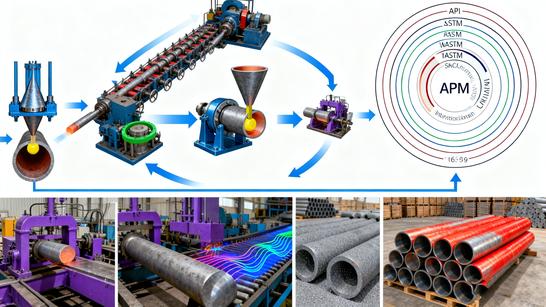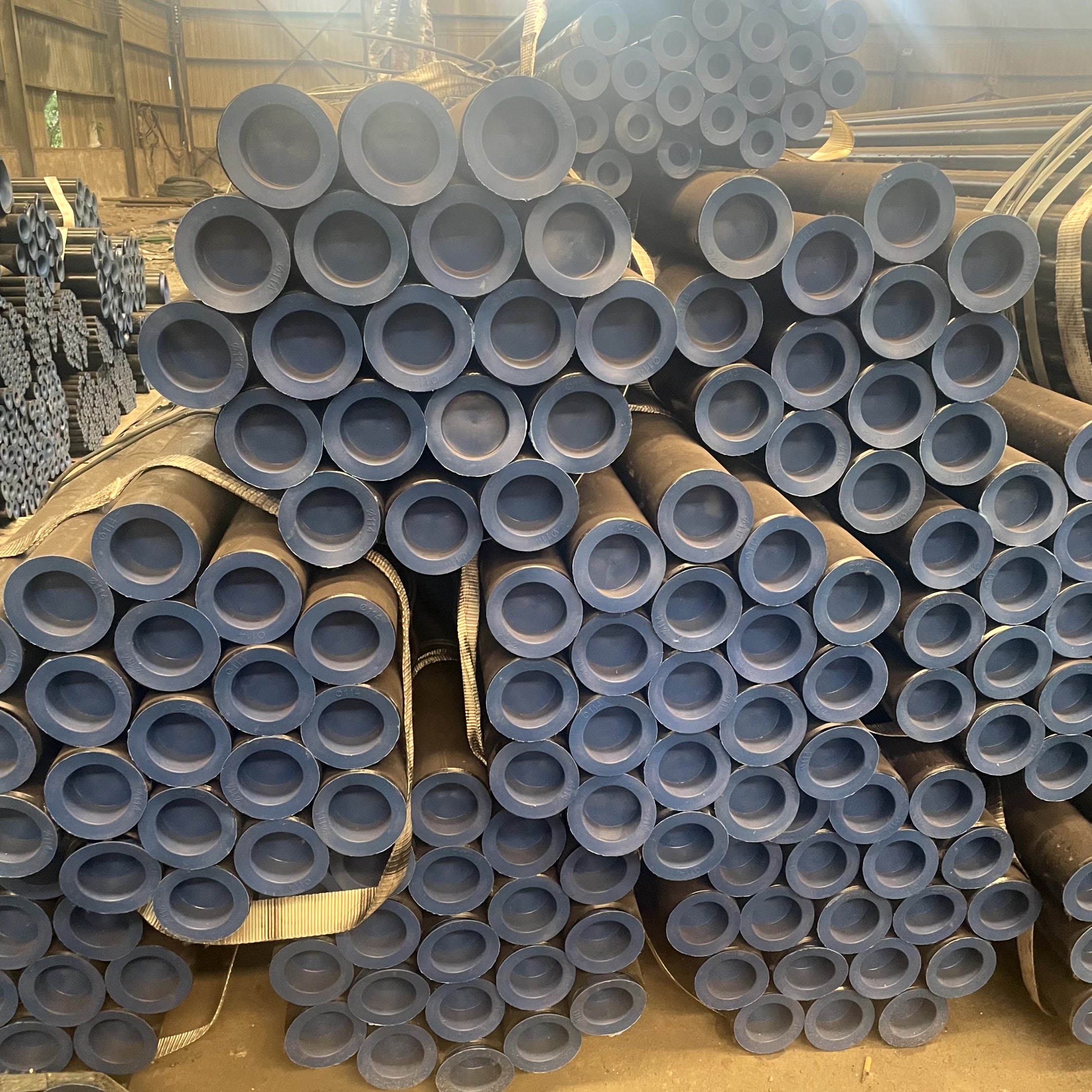In the world of high-pressure conveyance—where pipes carry oil, gas, or steam—a defect is not just a flaw; it's a catastrophic risk. This is why Non-Destructive Testing (NDT) is the most crucial phase in seamless pipe manufacturing. NDT allows us to peer into the very structure of the steel without compromising its integrity, ensuring that every pipe we deliver meets the absolute highest standards of safety and performance.
As a certified manufacturer, we implement a multi-layered NDT strategy, combining the most advanced technologies to eliminate all latent defects.
1. The NDT Arsenal: Principle and Application Scope
Our rigorous quality control program is built upon three primary NDT methods, each targeting specific types of defects.
1.1. Ultrasonic Testing (UT)
| Principle | Application Scope | Detection Focus |
| Acoustic Reflection: High-frequency sound waves are transmitted into the pipe material. Any internal discontinuity (defect) reflects the sound wave back to a sensor, which is then analyzed for location, size, and type. | 100% of the pipe body and ends, especially for thick-walled pipes and critical applications (e.g., API grades). | Internal & Subsurface Flaws: Laminations, voids, non-metallic inclusions, large cracks, and accurate wall thickness measurement. |
1.2. Eddy Current Test (ECT)
| Principle | Application Scope | Detection Focus |
| Electromagnetic Induction: An alternating magnetic field is applied to the pipe surface, inducing circular electrical currents (eddy currents) in the conductive steel. Defects interrupt the flow of these currents, causing a detectable change in the magnetic field. | Surface and near-surface areas of the pipe. Best for high-speed, inline inspection of smaller diameters. | Surface & Near-Surface Flaws: Small, shallow cracks, pinholes, pits, and minor surface discontinuities. |
1.3. Hydrostatic Test (HT)
| Principle | Application Scope | Detection Focus |
| Pressure Endurance: The pipe is filled with water (or an alternative liquid) and pressurized to a level significantly higher than its specified maximum working pressure. | The entire pipe is tested as a final integrity check. | Leak-Proof Integrity: Ensures the pipe structure can withstand specified internal pressure without deformation or leakage. This is the ultimate proof test of fitness-for-service. |
2. Full NDT Capability: Guaranteeing Zero-Defect Delivery
Our commitment to quality extends beyond simply using these methods; we ensure comprehensive coverage through state-of-the-art facilities and certified personnel.
2.1. Advanced NDT Integration
-
Automated Ultrasonic Testing (AUT): Our seamless pipe lines are equipped with automated systems that use multiple UT probes simultaneously, ensuring 360-degree coverage of the pipe body and allowing for precise defect mapping.
-
Magnetic Particle Inspection (MPI) / Liquid Penetrant Testing (PT): Used as complementary methods to confirm and size surface cracks in critical zones (like pipe ends) that may be missed by high-speed ECT.
-
Personnel Certification: All NDT technicians are certified to international standards (e.g., ASNT Level II or Level III), guaranteeing that the inspection procedures are performed correctly and results are interpreted accurately.
2.2. Beyond the Test: Traceability and Documentation
A high-quality pipe comes with transparent evidence of its integrity. For every seamless pipe order, we provide:
-
Mill Test Certificates (MTRs): Comprehensive documentation detailing the chemical composition, mechanical properties, and the precise NDT methods applied.
-
NDT Reports: Detailed logs of all UT, ECT, and HT results, confirming compliance with specific industry specifications (e.g., API 5L, ASTM A106, EN standards).
By entrusting your project to a manufacturer with this level of NDT capability, you are not just buying steel—you are investing in certified, risk-mitigated performance. The unseen guardian of your pipeline integrity is our unwavering commitment to Non-Destructive Testing.
Choose safety, choose certainty. [Request a quote] and review our NDT process documentation today.





